Solar roofing has revolutionized how homeowners embrace renewable energy. With advancements in technology, options like solar shingles and traditional panels can enhance property value and reduce energy costs. Understanding their differences in aesthetics, efficiency, costs, and installation can simplify your decision. At Shield Roofing in San Antonio, TX, we leverage over 25 years of experience to ensure your roof—solar-enhanced or standard—is built to last. As an Owens Corning preferred contractor and GAF certified with a BBB A+ rating, we are committed to providing durable roofs partnered with leading brands.
Understanding Solar Shingles and Traditional Solar Panels
Solar roofing tiles and conventional solar modules, both types of photovoltaic systems, convert sunlight into usable power but differ in design and application. Solar roofing tiles blend into your roof, resembling conventional tiles while generating clean electricity and helping to reduce carbon emissions, making them a visually appealing choice for homeowners seeking seamless integration. In contrast, traditional modules are mounted on a racking system over the existing roof. They offer a proven, efficient solution for maximizing energy output, ideal for those prioritizing performance over aesthetics.
What Are Solar Shingles?
Solar roof tiles, or photovoltaic shingles and solar roof shingles, combine traditional materials with photovoltaic technology to generate clean energy. They replace standard roofing components, offering homeowners a discreet renewable energy system solution without changing the roof’s appearance. Installation requires removing existing materials and placing the tiles in sunny areas for optimal electricity generation. Though installation costs may exceed those of traditional roofing, their dual function as roofing and energy producers makes them a wise investment. Brands like GAF Energy provide innovative solar roof shingle solutions, appealing to homeowners for their aesthetics and potential savings.
What Are Traditional Solar Panels?
Traditional solar panels use photovoltaic cells to convert sunlight into electricity. Encased in durable frames, they are mounted on rooftops with versatile racking systems that accommodate different roof materials for residential and commercial use.
Installation requires placing modules in optimal sun exposure areas, with drilling needed for secure placement. Clamp mounts simplify installation on metal roofs, while an inverter converts generated power for home use. Available in monocrystalline, polycrystalline, and thin-film varieties, these systems cater to diverse budgets and electricity needs. Their affordability and efficiency make them a popular choice for cost-conscious homeowners seeking reliable electricity.
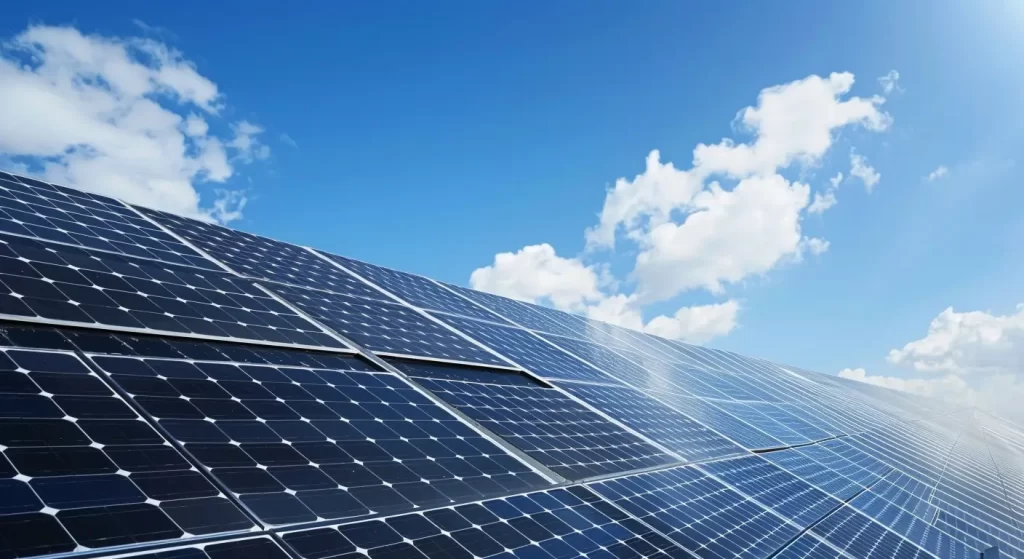
How Solar Shingles and Solar Panels Work
Both solar roofing tiles and traditional photovoltaic modules operate by capturing sunlight and converting it into usable power via photovoltaic cells, including PV cells. These cells absorb sunlight, generating direct current electricity, which is then transformed into alternating current for home appliances using solar inverters. Solar systems rely on optimal roof area placement and the size of the roof, whether the photovoltaic technology is integrated into roofing tiles or mounted as solar roof installations. The energy output of each is nuanced by the system type, affecting overall solar power efficiency and long-term savings.
Technology Behind Solar Shingles
Solar shingles merge roofing materials with photovoltaic technology. These attractive tiles, featuring solar cells, achieve energy efficiency of 14% to 18%. Their design captures sunlight on roofs with limited shading, while embedded wiring maximizes energy harvesting without compromising aesthetics. Manufacturers like GAF Energy focus on durability and weather resistance. By integrating roofing and solar energy systems, these shingles eliminate the need for separate installations, offering an efficient solution that combines renewable energy with structural integrity. We also collaborate with trusted brands like Owens Corning and GAF to provide top-quality solar roofing solutions.
Technology Behind Traditional Solar Panels
Traditional solar modules use photovoltaic cells to convert sunlight into direct current (DC) electricity, which is then transformed into alternating current (AC) by a solar inverter for home use. These installations achieve power conversion efficiencies of up to 22.8%. Mounted on compatible racking systems, conventional solar setups provide high output across various designs and slopes, delivering decades of clean power with minimal degradation. Valued for their generation capacity and affordability, these systems are crucial in renewable power solutions. Leading manufacturers ensure they withstand harsh weather, making them a reliable choice for homeowners.
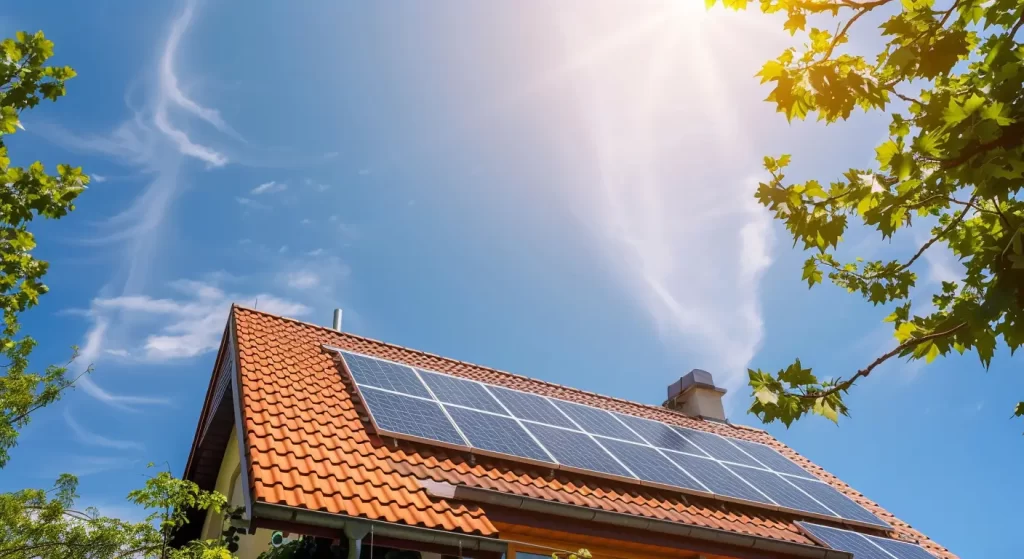
Comparing Costs: Upfront and Long-Term Investment
Investing in photovoltaic roof tiles involves higher upfront costs compared to modules, averaging $4 to $7 per watt versus an average cost of solar shingles of $2.85 per watt for standard systems. However, for homeowners in need of roof replacement, combining roofing and the cost of solar panels with renewable power systems may prove cost-effective. Long-term savings are comparable for both setups due to their eligibility for federal tax credits and efficiency benefits. Making the decision depends on factors like the condition of your roof and the size of your clean electricity goal.
Installation Costs in San Antonio, TX
Installation costs for solar roofing materials in San Antonio depend on the type of roofing, roof size, and the amount of power needed for the selected photovoltaic system. Although the initial investment is typically higher than conventional systems due to their dual function—roofing and electricity generation—homeowners appreciate long-term savings and aesthetics. Traditional solar modules have more predictable installation costs based on standard pricing benchmarks. Both options qualify for the federal solar tax credit, lowering overall expenses. With careful planning and consultation, homeowners can select a solar installation that aligns with their budget and efficiency goals.
Maintenance and Longevity Considerations
Choosing photovoltaic roofing involves evaluating maintenance and longevity. Solar tiles integrate with the roof, simplifying upkeep and matching asphalt roofing in durability, though they require monitoring for optimal power savings. Traditional modules typically last over 25 years, needing regular cleaning to prevent dust buildup. While occasional roof repairs may be necessary, they maintain long-term efficiency. Your choice between longevity and ease of maintenance depends on your sustainability goals and roof replacement needs.
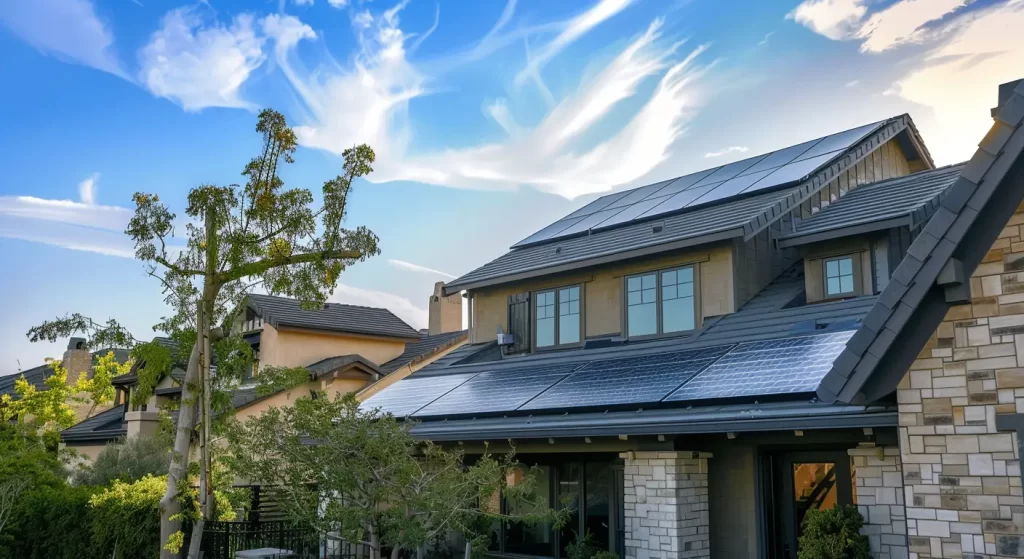
Aesthetic and Design Differences
Aesthetic considerations may influence your decision between solar shingles and panels. Solar shingles blend seamlessly into the roof, providing sleek aesthetics that enhance curb appeal without marking obvious solar systems.
In contrast, traditional panels offer an industrial look, often considered utilitarian. Panels may overshadow design but compensate with higher energy efficiency, especially on roofs with limited space.
Visual Appeal of Solar Shingles
Solar shingles are favored for their sleek, unobtrusive design that mimics traditional shingles and regular roof tiles while generating solar power.
- They integrate seamlessly into roofs, maintaining an elegant aesthetic.
- Their discreet design preserves curb appeal, aligning modern energy needs with style.
- Ideal for homeowners prioritizing appearance, those shingles enhance property value and architectural integrity.
For those seeking visual impact, solar shingles offer significant benefits.
Integration of Traditional Solar Panels with Roofing
Conventional solar modules excel in generating power but are less integrated into roofing design. They are mounted on roof sections with sufficient exposure to sunlight, often modifying the original roof appearance. Despite their bulkier setup, these installations complement traditional roofing materials like asphalt tiles by efficiently using limited roof space. They can be adjusted post-installation to optimize sunlight capture. For homeowners preferring power returns over aesthetics, traditional systems offer a dependable and cost-effective choice.
Performance and Efficiency in Texas Climate
Texas’ sunny climate provides optimal conditions for solar power systems. Both shingles and panels benefit from high sunlight exposure, delivering clean energy outputs suitable for households prioritizing energy efficiency.
Whether for solar shingles or panels, positioning systems to maximize sunlight ensures cleaner energy generation year-round in San Antonio, supporting homeowners’ renewable energy goals.
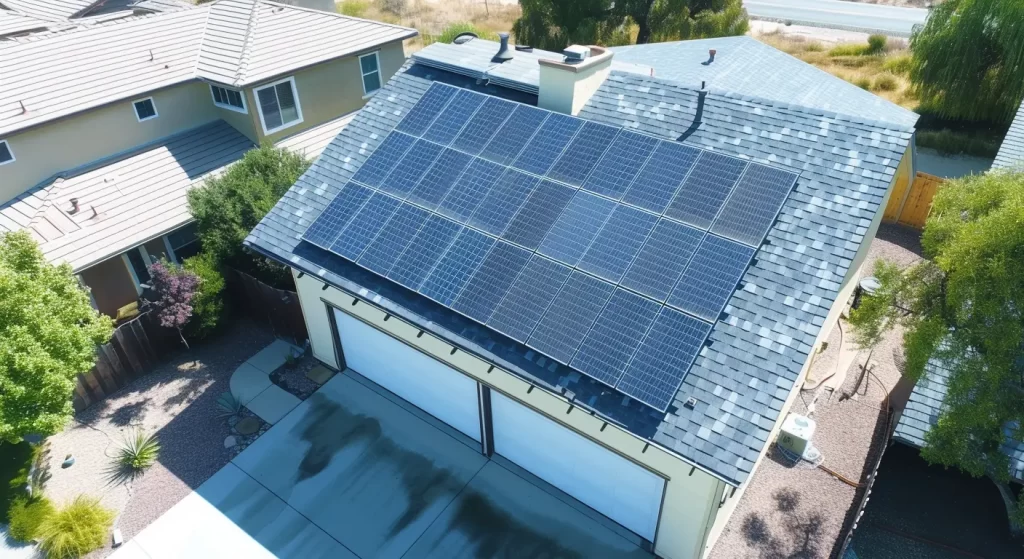
Energy Output and Efficiency Ratings
Energy efficiency is crucial when choosing between solar shingles and panels, especially in relation to the investment tax credit. Panels offer conversion rates up to 22.8%, while shingles range from 14% to 18%, affecting the total amount of energy output.
Panels provide greater energy per square foot, making them ideal for homes with limited roof space. In contrast, shingles may be a better option as they offer a lower energy output but have design integration benefits, attracting homeowners who prioritize aesthetics.
For Texas homeowners seeking optimal clean energy, traditional solar panels are typically the best choice for reliable efficiency.
Weather Resistance and Durability for San Antonio Homes
For homes in San Antonio, solar shingles and panels must withstand weather year-round. Designed from durable roofing materials like asphalt shingles and photovoltaic technology, solar shingles offer weather resistance while maintaining seamless integration.
Traditional panels excel in durability, with reinforced frames and high resistance against hail, heat, or storms. Proper installation safeguards both energy systems and underlying roofing.
Whether choosing shingles or panels, with Shield Roofing you can trust durable solutions that uphold your investment against Texas weather conditions.
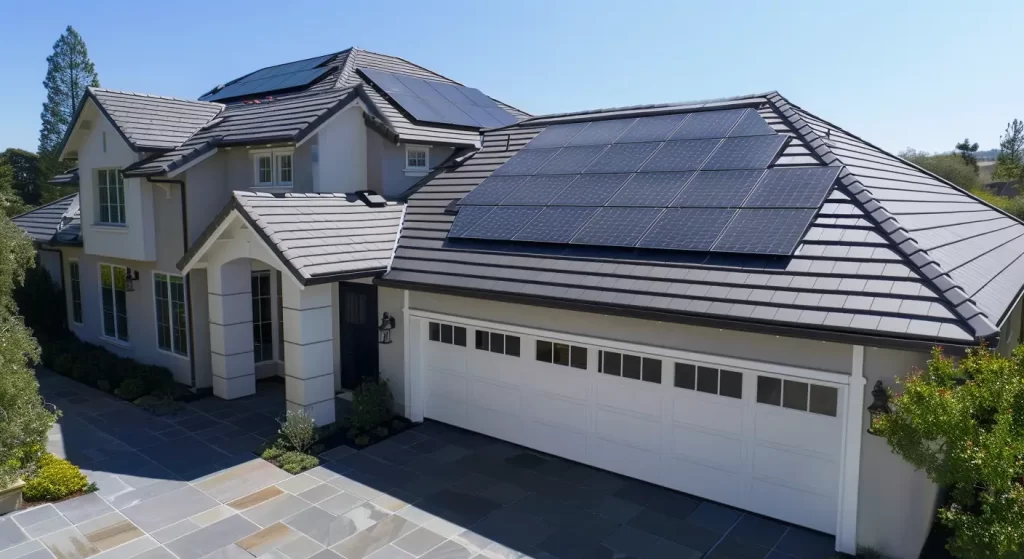
Contact Us
In conclusion, both solar shingles and traditional panels offer unique benefits for San Antonio homeowners. Solar shingles provide a sleek, integrated look, while traditional panels maximize energy efficiency. Your choice will depend on your needs, budget, and design preferences. At Shield Roofing, we’re committed to helping you make an informed decision that enhances your home and supports a sustainable future. With over 25 years of experience, our team is ready to guide you in selecting the best option and solution for your roofing project. Contact us for expert advice—let’s build a durable roof together!
Read our blog: Choosing the Right Metal Roofing Profile for Your Climate
Frequently Asked Questions
Are solar shingles as durable as traditional solar panels?
Yes, solar shingles and traditional panels share similar durability levels. Those shingles act as both roofing material and power generators, while panels deliver robust resistance. Both options include warranties up to 25 years, ensuring long-lasting solar roofing performance for your property.
How do solar shingles impact home value?
Solar shingles enhance home value by blending energy efficiency with curb appeal. Properties with integrated solar roofs often attract higher market demands, benefiting from modern aesthetics and long-term energy savings. As a result, solar shingles serve as a desirable home improvement solution.
